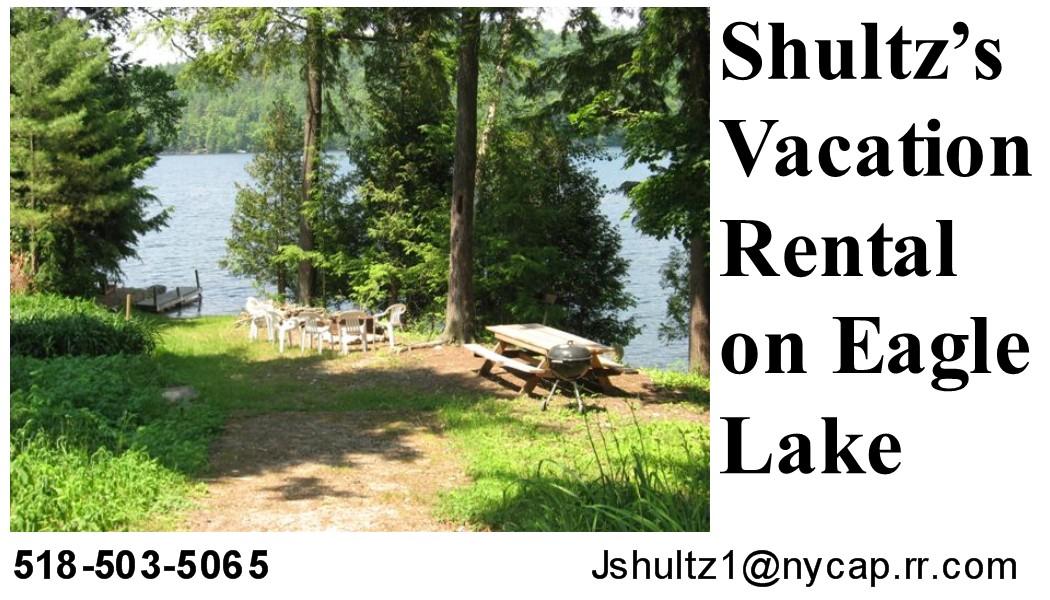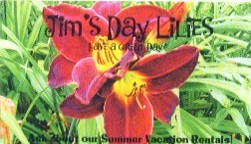| Aquatic Plants In Eagle Lake | How To Identify and Hand Harvest Milfoil | NYS Seagrant (Milfoil Description and Habitats) |
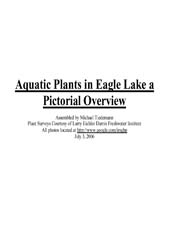
A pictorial guide using stock photos depicting the aquatic plants found in Eagle Lake using various plant surveys. |
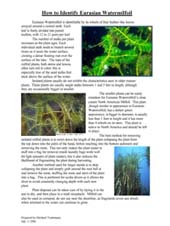
Suggestions for and descriptions of methods to be used by Eagle Lake residents as they remove milfoil at their residences around the lake shore. |
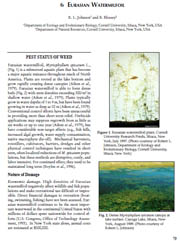
A thorough description of milfoil, its distribution, economic impacts and it's susceptibility to herbivores. R. Johnson, B. Blossey at Cornell University. |
| Maine Field Guide to Aquatic Plants | Biology and Control of Aquatic Plants (4.9mb) | Aquatic Ecosystems Restoration Foundation (AERF) Best Management Practices |

A comprehensive guide to aquatic plants and their look alike's. |

A best management practices handbook. Gettys, Haller, Bullard. A comprehensive guide for understanding the interaction of aquatic invasive's in the native lake environment as well as best management practices for invasive control. |
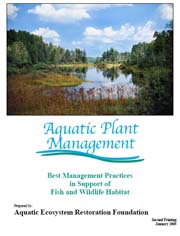
A best management practices guide to creating an ecosystem management plant including management options to support a healthy fish and wildlife habitat. |
| NYS Guideline for "Tier Plant Survey" | Adirondack Park (Aquatic Nuisance Species Management Plan) | NYS Rare/Threatened/Endangered Plant List |
 The June 2006 Natural Heritage Program list of the status of rare plants. |

A visionary plan to foster regional collaboration and coordination to minimize the threat of aquatic invasives within the Adirondack Park. |

The June 2006 Natural Heritage Program list of the status of rare plants. |
Review of the Science and Management of Eurasian Watermilfoil- Recommendations for Future Action in New York State |
Restoration and Management of Lakes and Resivoirs, 3rd Edition | |
 |
 |
|
| Department of Ecology (WA) an online guide presented by the state of Washington on ecosystem best management options. | ||
 |
||
Additional references can be found on the North East Aquatic Plant Management Society's web site.
|
Training/Education Note: the Nature Conservancy (Adirondack Chapter) conduct ongoing training through APIPP. Contact Hillary Smith at hsmith@tnc.org for more details |
Help Protect Adirondack Waters from Invasive Species
Get on-board with the Adirondack Park Invasive Plant Program's 7th annual aquatic invasive plant training and learn aquatic plant identification tips and survey techniques.
The training is free, but space is limited. Select a training location that best suits you. Please RSVP to holes@tnc.org by June 13.
All sessions are from 10 a.m. to 2 p.m.
June 20, Darrin Fresh Water Institute, Bolton Landing;
June 24, Harrietstown Town Hall, Saranac Lake;
June 26, Old Forge Fire Hall, Old Forge
Volunteers are asked to conduct an annual survey on an Adirondack lake of their choice. To-date, 307 aquatic enthusiasts have spent over 3,000 hours surveying 205 Adirondack waterways. From the Fulton Chain to Lake Champlain - volunteer efforts are making a difference!
Are you a returning volunteer? Feel free to join us for a half day or full day refresher course. Or pass this along and invite someone new!
See you on the water~
Thank you!
Hilary


